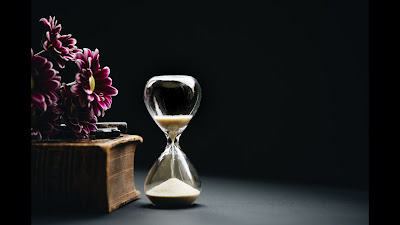Time is the movement from past to present to future. You can tell time with a clock, and it takes time to do anything. Since it enables us to organise and manage our lives, time is present everywhere and is immensely significant.
The strange thing about time, though, is that it doesn’t actually exist in the same sense as other things do . Time is something we cannot see or touch, but we can feel it passing by, so we know it exists. We are carried from the past, through the present, and into the future by the continual flow of time.
Therefore, to summarise, time is a tool to gauge how long things take to occur and it aids in our ability to plan and organise our life.
Different times in different places ?
Image credit: Nathan Dumlo/ Unsplash
The spherical shape of the Earth causes different areas to get different quantities of sunlight during the day, resulting in various time zones.This explains why there are 24 separate time zones on Earth, with some adopting half-hour or quarter-hour variations from standard time. Each time zone is one hour distant from the one before it.
The use of time zones aids in the synchronisation of human activities around the world, facilitating communication and coordination over great distances.
When we consider space travel and the potential for people to live on other celestial worlds, such as the Moon, the concept of time zones becomes more challenging. The Moon spins on its axis once every 29.5 Earth days, as opposed to the Earth, which does so every 24 hours.
As a day on the Moon is far longer than a day on Earth, astronauts who will soon spend a lot of time living and working there face many difficulties.
The Lunar Standard Time system
Image credit: Luke stackpoole / unsplash
Scientists and engineers are creating a new timekeeping system for the Moon to solve this problem. The Lunar Standard Time system, will divide each lunar day into 100 equal “Lunar Hours,” will be based on the revolution of the Moon. The length of a Lunar Hour would be equivalent to 14.4 Earth days, making it simpler for astronauts to keep track of time and follow a regular routine.
Establishing time zones on the lunar surface presents a number of logistical and practical obstacles in addition to those brought on by the Moon’s peculiar rotation. For instance, depending on the location and orientation of lunar bases and habitats, various portions of the Moon may experience differing levels of sunlight and darkness. This could have an impact on how time is measured and divided.
Notwithstanding these difficulties, engineers and scientists are confident that a lunar timekeeping system can be built to accommodate upcoming lunar expeditions.
The creation of new timekeeping and synchronization systems will be crucial for maintaining a regular schedule and assuring the success of these missions as humans continue to explore and live on other celestial worlds.
It is not the first time that the scientists are trying to communicate with outer space just like the time they sent the mega rocket to space
To sum up, time is a basic idea that affects how we see and feel the world. The use of time zones on Earth helps to synchronize human activities around the world, but the exploration of space and human habitation on the Moon and other celestial bodies will need the creation of new timekeeping systems. The planned Lunar Standard Time system, which will be a crucial part of future lunar missions, is one example of how scientists and engineers are attempting to overcome the particular obstacles provided by living and working in space. Just like time when China focused on finding the water on the moon and they did everything they could to achieve it.
Time is everywhere, and it’s really important because it helps us to coordinate and plan our lives.
In conclusion, time is a fundamental concept that shapes our perception and experience of the world. The use of time zones on Earth helps to synchronize human activities across the globe, while the development of new timekeeping systems will be essential for future space exploration and habitation on the Moon and other celestial bodies. The proposed Lunar Standard Time system is one example of how scientists and engineers are working to address the unique challenges posed by living and working in space, and will be an important component of future lunar missions.





1 comment
[…] Space exploration and humanity are linked. Latest space technologies like direct fusion drive could open opportunities for exploration and colonization. Further, it could fasten the space programs while ensuring safety and saving fuel and costs for comfortable travelling. Unlike conventional missions, it can be a sustainable option that contributes to environment-friendly space missions. Also, the technology can open the door to multiple economic opportunities, from research to manufacturing and managing operations. This can create jobs in the space industry that give a boost to economic growth. […]